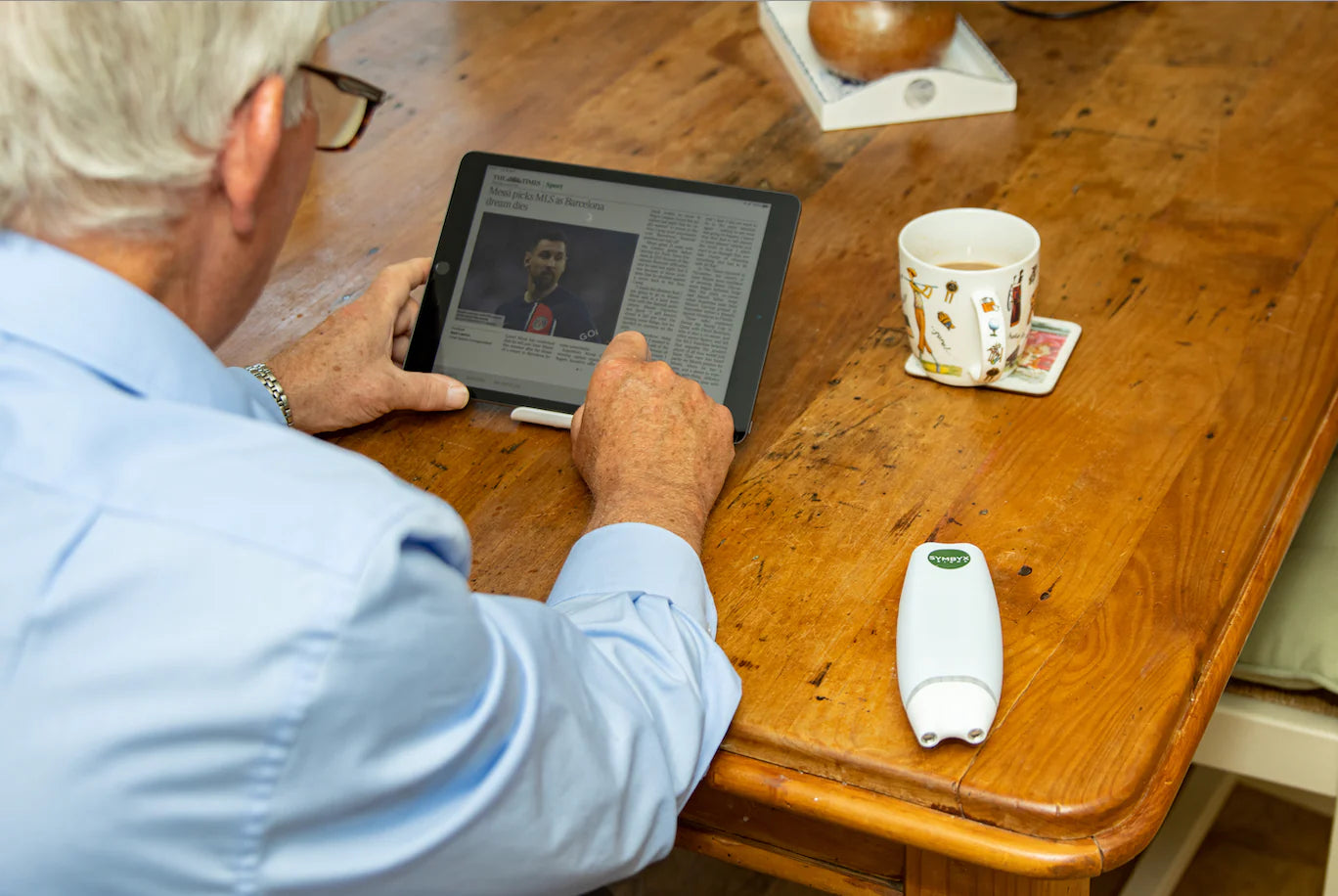Pain affects up to 85% of people with Parkinson's. For some people with PD, the pain is so severe that it is actually the most disabling part of having the disease. Too often, pain levels are overlooked by doctors and physicians, and people with Parkinson's end up taking loads of different medications to control their various symptoms.
Light therapy by SYMBYX can reduce Chronic Pain in Parkinson's, but it's important you receive the right dose, treatment protocol and wavelength of super-pulsed light. Our Clinical Support team can assist you with this.
People with Parkinson's experience both nociceptive and neuropathic types of pain. When we have decreased levels of dopamine, our nerves become sensitive, firing off at the wrong time, with more speed and intensity. This increases and intensifies pain and inflammation around the body.
Side effects of medications can also increase pain, and contribute to symptoms of increased dystonia, tremor, and rigidity. Over time, this affects posture and muscle and joint function, which can all become sources of pain as well. Often, this is treated by prescribing more medications, which can cause further stomach upset and nausea, as well as affect the healthy functioning of our microbiome, gut, liver and kidneys.
Understanding the different types of pain:
Not all pain is the same, and not all people with pain are experiencing the same kind of discomfort. There are two main types of pain: nociceptive and neuropathic pain.
Nociceptive pain is our body's normal response that occurs when we are exposed to potentially damaging stimuli. This includes stepping on a tack, having a fall, or the pain that is caused by inflammation. It can be acute (short-term) or chronic (long-term).
Then we have neuropathic pain. This is pain that is caused by direct damage or threat to our nerves and brain. This includes peripheral neuropathy, sciatica, Fibromyalgia, and much of the pain associated with Parkinson's disease. Often, this pain feels more diffuse and can have other qualities too, such as burning, numbness, weakness, or pins and needles. This type of pain can become chronic and can be unresponsive to medications or surgery. Some people can experience this kind of pain for years.
If you have any questions regarding pain and the potential benefits of SYMBYX light therapy, using any of our hand-held laser or light therapy devices, please contact our clinical support team at clinicalsupport@symbyxbiome.com

